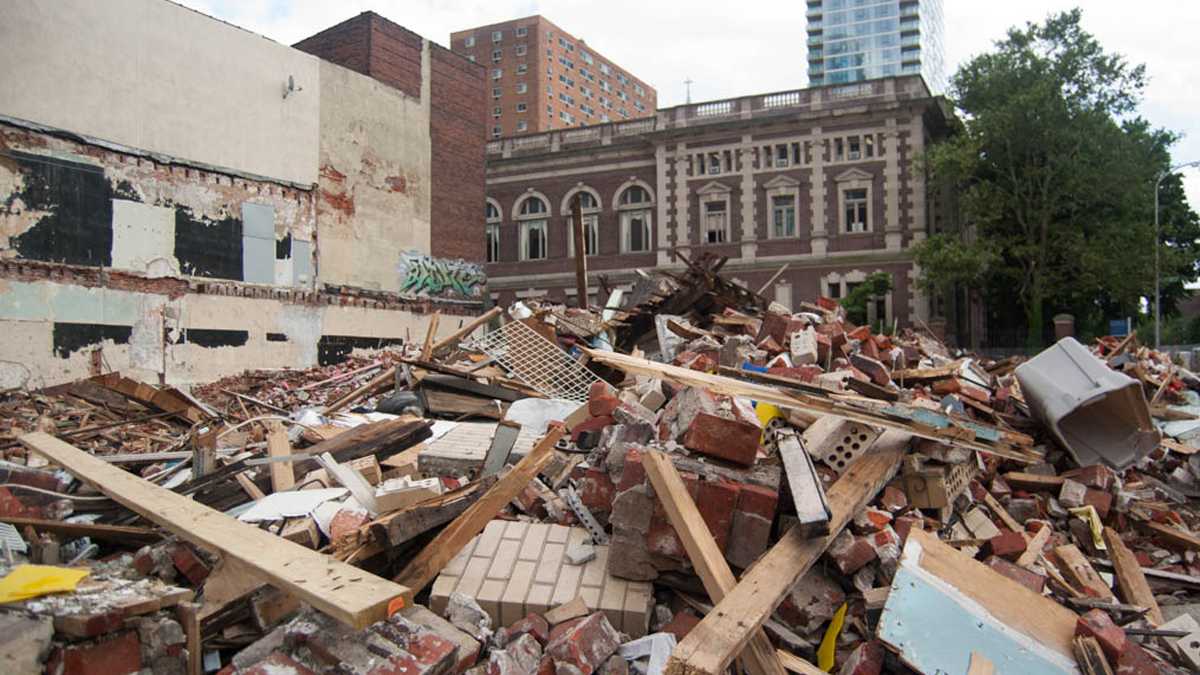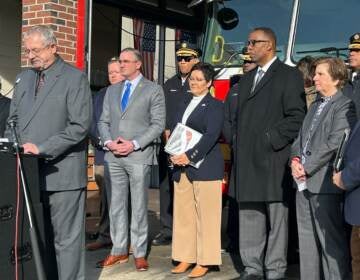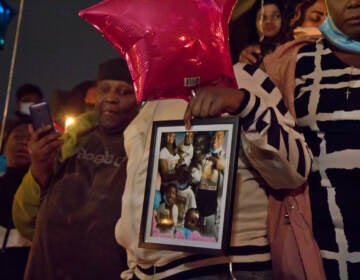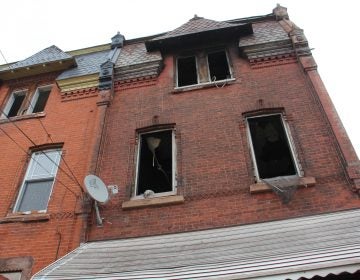Licenses & Inspections’ unresponsiveness makes Philadelphia less safe

The scene following the 2013 building collapse at 22nd and Market streets in Center City Philadelphia. (NewsWorks, file)
The property code enforcement system is broken. The evidence is out on display for all to see. And it would be imprudent to think the city’s high eviction rate doesn’t have parallels with this systemic epidemic.
A plethora of aging, dilapidated residential and commercial structures, littered with trash, are a growing part of Philadelphia’s topography — outside of the city’s tourism districts. Hence, the popular moniker “Filthadelphia.”
The financial website WalletHub’s 2017 list of “Best & Worst Places to Rent in America” for the 150 most populous U.S. cities ranked Philadelphia in the bottom quarter at No.128.
On bustling avenues such as Rising Sun, Frankford, Cottman, Algon, and Bustleton, slumlords flood working-class neighborhoods with substandard rental units that demoralize and humiliate many of Philadelphia’s vulnerable citizens — who often cannot afford reputable legal representation, but are not receiving any government assistance, and therefore don’t qualify for free legal services. (The No. 1 law firm in the city that specializes in landlord-tenant law provided me with an upfront quote between $10,000 and 15,000, with “no guarantees” to pursue a case against my former slumlord, who happens to be an influential developer in Philadelphia.)
According to the latest U.S. Census data, close to half of all Philadelphia residents are renters.
The L&I intake process for multi-family residential structures catches people up in the Good Samaritan Prevention Information Net or, “G-SPIN,” if they don’t live on the property. And most likely the 3-1-1 operator will inform you they cannot process the complaint especially if you phone it in. (Hopefully, this policy changes in the near future).
As long as the information is accurate, substantiated by pictures; who cares about the source or motives behind where the information is coming from.
In recent history, L&I is commonly reacting to a crisis and rarely preventing one. In October of 2016, Philadelphia Fire Capt. William Dixon confirmed there was a fatality at a 10-story apartment fire in the Northeast on the 2300 block of Tremont Street. On Tuesday, March 17, 2015, 15 people were hurt and 100 displaced in a four-alarm fire that started in the basement of the Rita Grace Manor apartment complex, located on the 9100 block of Academy Road. In 2014, a balcony collapsed at the historic John C. Bell apartment building in Rittenhouse Square, where 22-year-old Albert Suh plummeted to his death. In 2013, we had the 22nd and Market disastrous building collapse where six people died and 13 were injured. In 2012, firefighters Lt. Robert P. Neary and Daniel Sweeney died tragically responding to a fire at the old Thomas W. Buck Hosiery Building on the corner of York and Jasper streets.
It has been my experience along with countless other renters whom I have personally spoken with over the years, that inspectors are obliterating the Licenses & Inspections “core values” of accountability, customer service, professionalism, and ethical practice. (I have been a renter in Philadelphia for several years).
Often inspectors blatantly lie and choose to ignore obviously hazardous property code violations that even the untrained eye could identify and write-up, exacerbating an already tenuous circumstance. Speaking from experience, frequently what ends up happening is the taxpayer is forced to submit multiple times the same property maintenance issues further risking constituents’ health and safety. On more than one occasion, inspectors have failed to show up to my apartment, yet they closed the case claiming they had inspected my residence on a specific day. Meanwhile, in one instance, I had a report from a certified home inspector detailing several substantiated violations supported by photo evidence.
In my overwhelming experience, public officials either are unresponsive or intent on concealing, especially the “decision makers” who have the authority to institute change.
—
Jason Kaye is a writer residing in Philadelphia.
WHYY is your source for fact-based, in-depth journalism and information. As a nonprofit organization, we rely on financial support from readers like you. Please give today.




